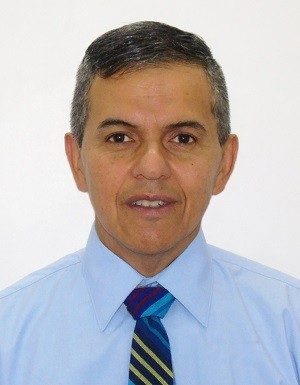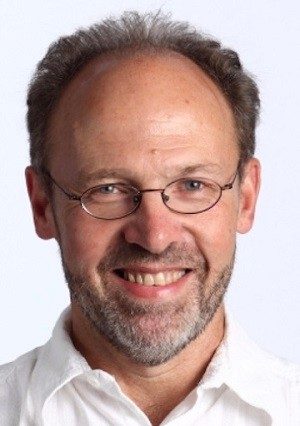CPT Profiles: Edgar Arriaga & Clark Landis
By Sarah Derouin for the American Chemical Society
Preparing Chemists for the Future: Meet the Members of the CPT
If 2020 has taught us anything, it has taught us that you need to be prepared and flexible. Chemistry graduates are no exception to this lesson. The American Chemical Society (ACS) is committed to ensuring that every emerging chemist, from small college to research university, receives a quality training and preparation for the workforce. Enter the work of the ACS Committee on Professional Training, or CPT.
Since 1936, ACS and members of the CPT have developed a set of guidelines for chemistry programs. Chemistry programs that meet these guidelines can become ACS approved. Once approved, chairs can then certify graduates who complete certain standards within the guidelines. To date, there are approximately 700 approved institutions in the United States.
ACS spoke with CPT Chairperson Edgar Arriaga, professor at the University of Minnesota and CPT Member Clark Landis, professor and Department Chairperson at the University of Wisconsin-Madison about their tenure in CPT. Both described how the committee’s work has evolved overtime to be more inclusive, equitable, and reflective of our diverse society.
Call to Service
Arriaga and Landis joined CPT because they wanted to become more involved in ACS and the chemistry community. Collectively, they have more than two decades of CPT experience.
After serving two terms as a CPT member, Arriaga was asked to consider becoming the CPT Chairperson. He notes he was both honored and concerned—it was a big responsibility. Ultimately, two initiatives drew him in: working towards creating an equitable society and expanding the work of ACS and CPT globally.
“The idea of making the ACS approval process more universal, more global, really resonated with me, and that is why I was willing to take on the challenge of being Chairperson,” said Arriaga.
Landis was drawn to CPT because of its impact over the years. “CPT really appealed to me because I was aware of the difference it made at so many institutions—both small and big.” He added that the benefits of being on the committee weren’t one sided. “One thing that I really like about ACS committees in general, but particularly CPT, is that you learn a lot about leadership skills,” said Landis. “I'm becoming the chair of my department, and really appreciate the opportunity ACS provided to learn how to lead teams.”
Robust and Inclusive
Part of the work CPT does is to observe what is happening in the world and how best to prepare chemists to meet future challenges. And Chairperson Arriaga said that the guidelines cannot be a one-size-fits-all approach.
“The range of chemistry programs in the U.S. is huge,” said Arriaga, adding that each program is unique. He explained that chemistry communities are affected by resources, for example whether the program is an urban or a more rural setting, or has certain demographics.
This variability is a gift and a challenge for creating guidelines. “One of the problems with chemistry curricula has it more or less remained unchanged for the last 70 to 100 years,” said Landis, adding that traditionally there’s been a focus on well-defined subdisciplines of chemistry, like analytical or inorganic. Landis called this type of curricula “stripy”—where topics tend to stay separate and not integrated.
Having separate and non-integrated views of chemistry can hold students back from their full professional potential, explained Landis. He added that it is much better to train students to have a “dense web of interconnections that all practicing professional chemists have.”
This is where a smaller school, perhaps with fewer faculty members, can shine. “What a lot of small schools have done is integrate their programs,” explained Landis. “There may be a course that is 30% of the kind of content that you'll get in an analytical [class], but with more organic, some inorganic, or some physical. I think that ultimately, students really benefit from seeing this more integrated, holistic approach.”
Having ACS standards can also boost the funding potential for smaller departments. Landis saw this first hand when he gave a talk at a small college in the Chicago area. While on a tour of the department’s facilities, he noticed an NMR instrument.
Surprised that a smaller school had such an expensive instrument, he asked how they managed to procure the NMR. “They said, ‘Well, because the ACS made it the standard that you had to have this kind of instrumentation.’” Landis explained that because of this standard, small colleges are able to secure funding from the NSF (National Science Foundation) and other funders to provide students this vital experience on vital instrumentation.
“I just felt really proud to be associated with CPT because it had that kind of impact,” said Landis. “And of course, when they showed me the instrument, there were undergraduates working at the instrument and explaining what the little details of the spectrum meant… that was just really delightful to see.”
But guidelines are not just the curriculum, said Arriaga. “It's not only having the resources and having the courses or having faculty—it's more complex than that.” He explained that training future chemists means also thinking about equity, inclusion, and even how to best teach new generations of students. Arriaga said that CPT has been working hard to represent the same diversity on the committee that they see in the field of chemistry. “Our thought process has included: whose voices are being represented in CPT?” He noted that over the past few years, CPT has worked toward obtaining gender balance, and are also making great strides on ethnic and racial representation.
Landis said inclusiveness is built into the way CPT operates and populates the committee. Industry professionals, small colleges, and university researchers all have a voice in crafting guidelines. “Chemistry majors go on to do so many different things,” said Landis. “Their undergraduate training needs to be broad; it needs to be centered in a way that retains its chemistry focus, but allows students to go on to other careers.”
The same diversity seen in CPT is also a goal for chemistry departments. The committee is guiding schools and promoting inclusivity efforts, including long-term hiring practices. “I was proud to be a member of CPT in the past few years when we took on questions, like: is a curriculum inclusive?” said Landis.
In July 2020, CPT published a draft guidelines section (PDF) that addresses diversity, inclusion and respect. “Faculty are becoming more diverse,” said Landis. “People are incorporating the language of diversity, more naturally now.”
Flexibility (Especially During a Pandemic)
In the past, Arriaga said that evaluations of programs tended to focus on the things associated with elite training: schools with lots of available funds, cutting-edge equipment, and loads of faculty in many disciplines. “In my opinion, nowadays it could be considered quite elitist,” he noted.
Instead, over the past decade, CPT has evolved, moving towards a more flexible set of standards. “We are celebrating strengths, more than punishing those that have some concerns,” said Arriaga.
Landis agreed, adding that CPT’s focus has moved from “bean counting” to looking at the overall excellence of the program. “That means more of a focus on skill development, and less on exposure,” he said. “I have a lot of friends and former students who teach at smaller colleges, and they have more fertile and imaginative programs because ACS has high standards, but it also has enough flexibility that institutions can meet those standards in ways that are appropriate for their local environment.”
Some of that flexibility has been put to the test for all departments during 2020. The COVID-19 pandemic has disrupted classes and laboratory experiences for all students. “CPT has always emphasized that hands on laboratory experience is essential to our training as a chemist,” said Landis. “That means that virtual or online laboratories are disfavored.”
As colleges switched to online learning, some requirements—like in-person laboratory work—became impossible. “We understand that programs, the ACS, and everybody are experiencing big challenges right now,” said Arriaga. To address the cancelled labs, a small task force was created to develop adjustments to the guidelines for in-person lab hours. The new guidelines will be effective for the next year and then re-evaluated as the effects from COVID-19 resonate through chemistry programs.
In some ways, COVID-19 has been the big equalizer for departments—both small colleges and large universities are struggling with the same challenges. “This situation is making us reflect on what is truly important,” said Arriaga. “Even when we go back to the old normal, this is an opportunity to really see how we work and what our priorities should be.”
“The idea of making the ACS approval process more universal, more global, really resonated with me, and that is why I was willing to take on the challenge of being Chairperson.” — Edgar Arriaga, Ph.D.



